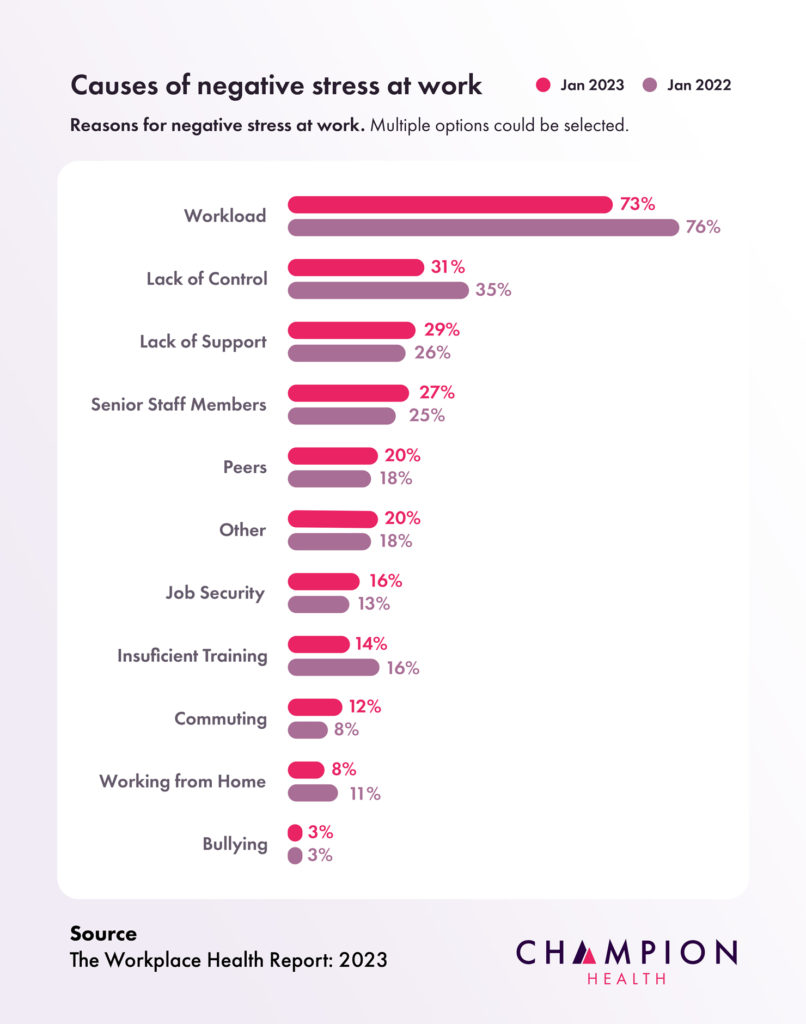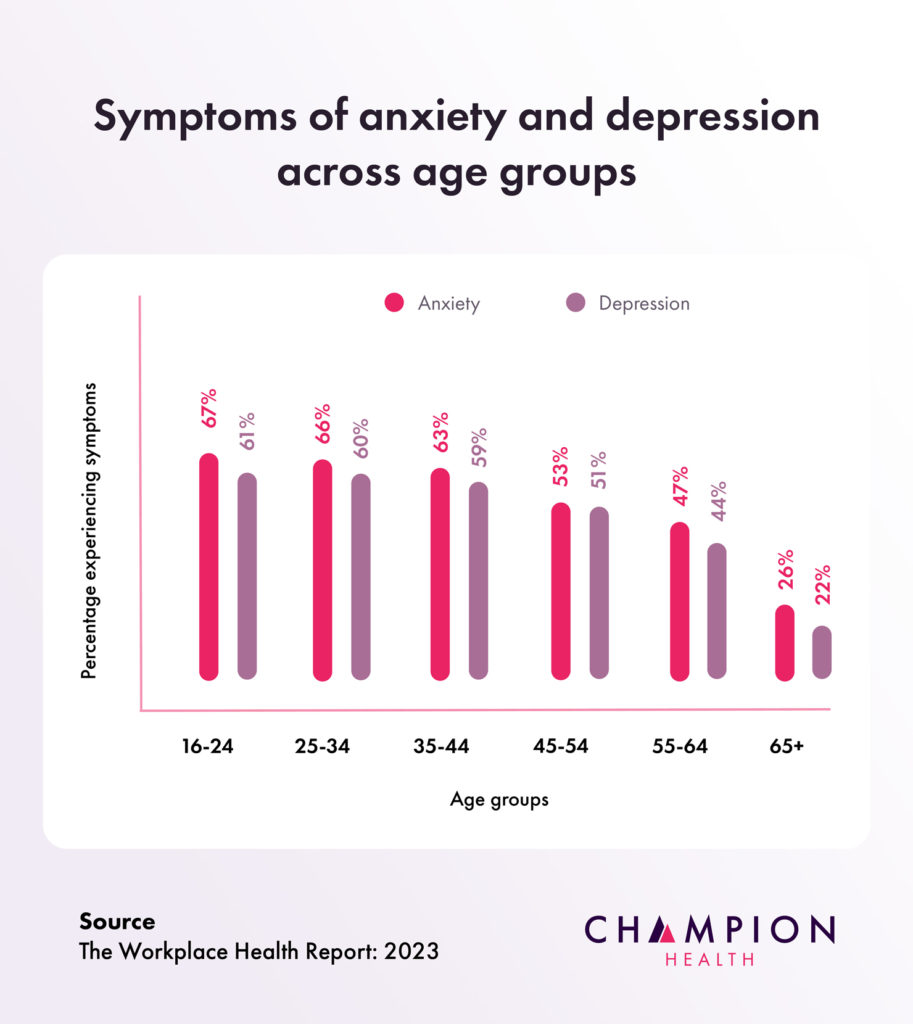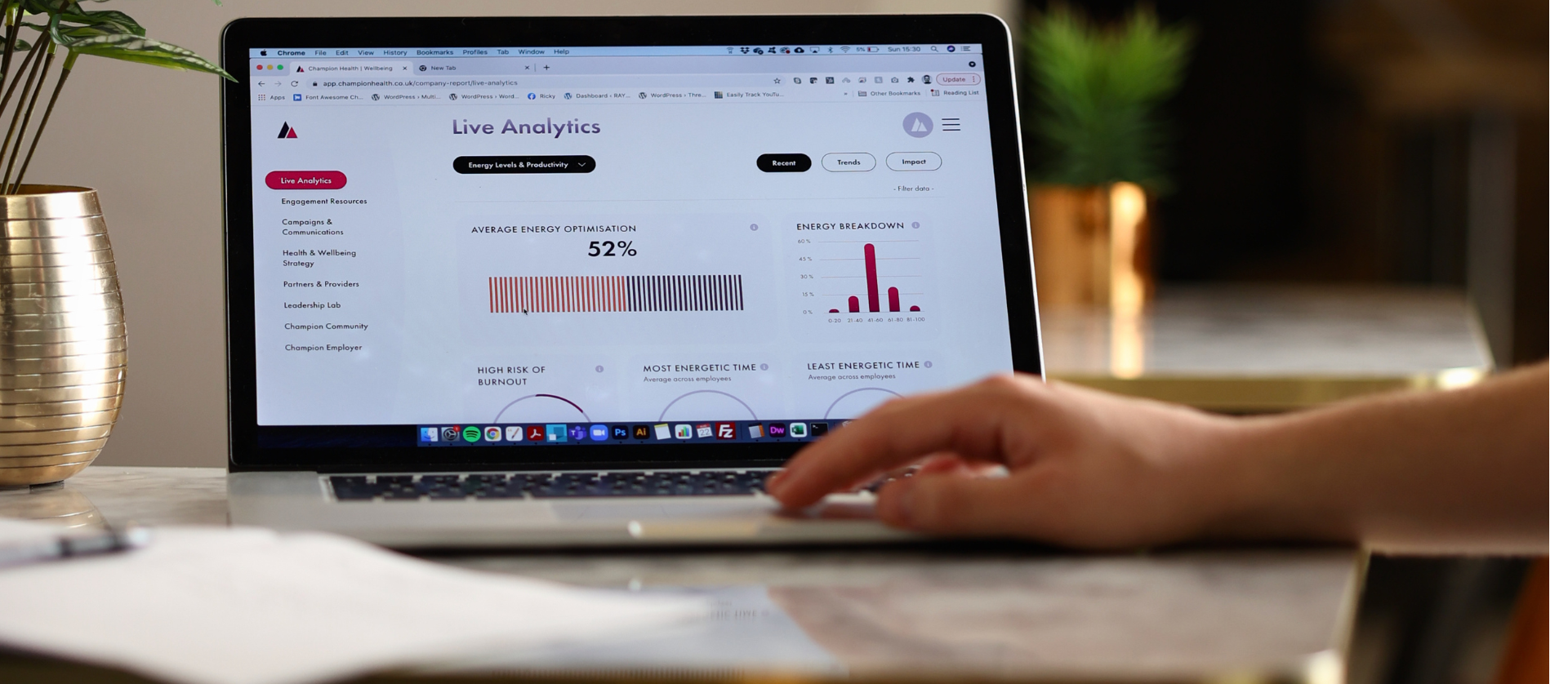From global pandemics, to cost of living crises, to day-to-day challenges, it’s no wonder our employees’ mental health is feeling the strain. Good employers are striving to reduce employee anxiety, but it’s not easy.
With anxiety statistics showing that 3 In 5 employees are experiencing anxiety, there continues to be a compelling case for employers and people managers to provide support through their wellbeing strategy.
With that in mind, this article sets out five simple, practical and actionable steps that leaders and people managers can take to reduce employee anxiety. They are:
- Maintain clear, open and regular communication
- Give your people control
- Discover and manage causes of work-related stress
- Discuss reasonable adjustments
- Consider the role of diversity & inclusion
1. Maintain clear, open and regular communication
‘The unknown’ is a common cause of anxiety, for both employees and their managers. Negate the effects of this by maintaining clear, open and regular face-to-face communication with your team members.
During this communication, cover potentially anxiety-inducing subjects such as workload, expectations and general work performance.
Encourage your employees to suggest ways you can support them. Crucially, make it clear to the employee that they can reach out to you if they’re struggling.
It’s also important to simply ask your employees how they are – this is often the quickest and most direct way of identifying struggling employees.
You may feel that you are ‘overstepping’ professional boundaries by asking these kinds of questions, but employees often want their employer to take an interest in their personal lives. This is particularly the case if personal challenges are likely to impact their work in some way.
If you find starting these kinds of conversations can be difficult, explore these practical resources:
- Watch: Talking about mental health: the leadership edition
- Read: Talking about Mental Health in a Staff Appraisal or 1:1
2. Give your people control
Anxiety is strongly linked to our perception of control, so it’s no surprise that a lack of control is one of the leading causes of employee stress.
Out of the thousands of employees we surveyed, 31% cited lack of control as a cause of negative stress at work.

Create a buffer against workplace stress and anxiety by giving your people a sense of control and autonomy over their work. This can include areas such as their workload, where and when they work, and the expectations you have of them.
As well as reducing workplace anxiety, giving employees this sense of control also improves both motivation and engagement.
Provide this sense of control by:
- Granting flexibility over working hours
- Setting performance targets alongside the employee
- Authorising employees to dictate the pace of their work
3. Discover and manage the causes of work-related stress
Workplace stress and anxiety are closely linked. By discovering and managing the causes of work-related stress within your organisation, you will also reduce employee anxiety.
As mentioned above, each employee will have their own contributors to work-related stress. However, within your organisation, there may be common stressors that are affecting a significant number of your people.
As a starting point, read this article to discover common causes of work-related stress to look out for within your organisation: Top 10 Causes of Stress at Work
You should also take steps to discover the work-related stressors specifically affecting your people, such as:
- Asking employees what their stressors are in a 1:1 environment
- Collating information on your people’s specific stressors, either through wellbeing platforms or internal surveys
Once you discover what the common stressors within your organisation are, take steps to reduce their impact. Read this article to discover how Strata had great success with this approach: How Strata reduced work-related stress by 68%.
Discover more practical ways to reduce employee stress in this article: 14 Ways to Reduce Workplace Stress.
4. Discuss reasonable adjustments you can make
Reasonable adjustments – changes to the workplace or the work practices of an employee that enable them to perform at work – are a key part of any employee support system.
In some cases, very simple changes are all that’s required to significantly reduce the anxiety a team member is experiencing.
So, where appropriate, work with employees experiencing anxiety, to discover the changes you can make to help them.
By doing so, you will help turn their working environment from an anxiety-inducing place to a place where they feel understood and able to work at their best.
Examples of reasonable adjustments you could make include:
- Providing increased supervision
- Offering the option to work from home
- Changing the physical working environment
For further guidance and suggestions for reasonable adjustments you could make, read this article: 10 reasonable adjustments for employee mental health
5. Consider the role of diversity & inclusion
Our research revealed an imbalance in the prevalence of anxiety among different demographics of the workforce. For example, the data showed that younger employees are more likely to experience anxiety compared to their older colleagues.
The data showed that 67% of employees aged between 16 and 24 are experiencing anxiety, compared to just 53% of employees aged between 45 and 54.
We found a similar link between the age of employees and workplace depression, which you can read more about in this article on depression statistics.

These findings place a spotlight on the intimate relationship between employee wellbeing and diversity and inclusion.
A one-size-fits-all approach to wellbeing initiatives will never work. Recognition of the different pressures faced by various demographics, and a commitment to addressing them, is imperative for any employer who wants to reduce anxiety in the workplace.
With that in mind, before you implement anxiety-reduction initiatives, take steps to discover the unique challenges faced by different demographics of your workforce.
Once you have you have discovered these challenges, implement support and adjustments to specifically address them. By doing so, you will develop a wellbeing strategy comprised of initiatives that your employees will actively engage with.
Watch the video below for expert advice on how to drive engagement with your wellbeing initiatives.
5 Ways to reduce employee anxiety: rounding up
Workplace anxiety is prevalent and that’s unlikely to change in the near future. So, it’s vital for leaders and employers to support their people now.
Employees remember how their organisations treated them in difficult times; by providing the right support now, you will create a culture in which your people are less likely to experience work-related mental ill-health.
Ultimately, this means they can become a happier, healthier and more productive workforce.





